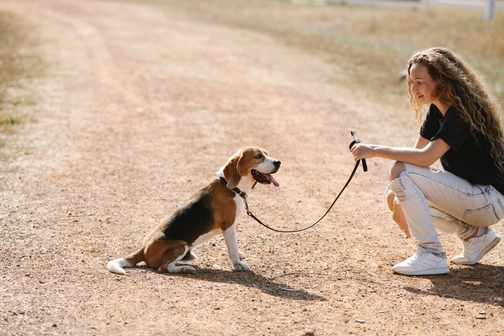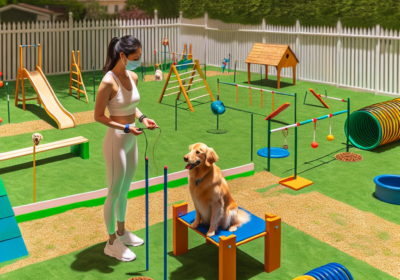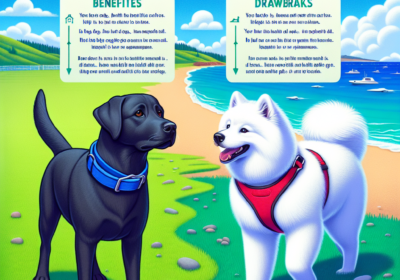Mastering Canine Manners: A Comprehensive Guide to Dog Behavior Training and Modification

Dog behavior training and modification are essential aspects of responsible dog ownership and ensuring a harmonious relationship between dogs and their human companions. Training helps dogs develop good manners, learn appropriate behaviors, and build a strong bond with their owners. Behavior modification is particularly important for addressing undesirable behaviors or behavioral issues in dogs.
Basic Dog Training:
- Obedience Training: Obedience training focuses on teaching fundamental commands such as sit, stay, come, down, and heel. These commands establish a line of communication between the dog and the owner and are vital for safety and control.
- House Training: House training is crucial for ensuring that dogs learn where and when to relieve themselves appropriately, avoiding accidents in the house.
- Socialization: Socializing dogs with other animals and different environments from a young age helps prevent fear or aggression issues later in life.
Behavior Modification:
- Aggression: Aggression in dogs can be due to fear, territorial behavior, possessiveness, or past experiences. Behavior modification involves identifying the root cause of aggression and implementing desensitization and counterconditioning techniques to change the dog’s response.
- Separation Anxiety: Dogs suffering from separation anxiety may exhibit destructive behaviors or excessive barking when left alone. Behavior modification techniques, such as gradual desensitization to departures and arrivals, can help alleviate this issue.
- Fear and Phobias: Dogs can develop fears or phobias towards specific stimuli, like thunderstorms or fireworks. Behavior modification aims to reduce the fear response through desensitization and creating positive associations.
- Excessive Barking: Training can help curb excessive barking by teaching dogs a “quiet” command and addressing the underlying reasons for the barking behavior.
- Jumping Up: Behavior modification can teach dogs alternative greetings instead of jumping up on people.
- Chewing and Destructive Behavior: Redirecting the dog’s chewing behavior to appropriate toys and providing mental stimulation can help prevent destructive chewing.
Positive Reinforcement: Positive reinforcement is a key element in both training and behavior modification. It involves rewarding desired behaviors with treats, praise, or affection, which encourages the dog to repeat those behaviors.
Consistency and Patience: Successful behavior training and modification require consistency from the dog owner. Repetition and patience are essential as dogs may take time to learn and change their behaviors.
Seeking Professional Help: For complex or severe behavioral issues, consulting a professional dog trainer or animal behaviorist is recommended. These experts have experience in understanding canine behavior and can create personalized training plans to address specific problems.
Avoid Punishment-Based Techniques: It’s crucial to avoid harsh punishment-based training methods, as they can lead to fear and anxiety in dogs, making behavioral problems worse.
Common Training Mistakes to Avoid:
While training your dog, it’s essential to be aware of common mistakes that can hinder progress and even lead to behavioral issues. Avoiding these mistakes will contribute to a successful training experience:
- Inconsistency: Dogs thrive on consistency. Using different commands or allowing different behaviors in different situations can confuse your dog and slow down the learning process. It’s crucial to establish clear and consistent rules from the start.
- Skipping Socialization: Socializing your dog with other dogs and various environments is critical for their overall development. Early socialization helps prevent fear and aggression issues later in life, making your dog more comfortable and well-adjusted in different situations.
- Using Punishment as a Primary Training Tool: Punishment-based training techniques can have detrimental effects on your dog’s trust and well-being. Instead, focus on positive reinforcement and reward-based training to motivate and build a positive association with desired behaviors.
- Ignoring Positive Behaviors: Recognize and reward your dog’s positive behaviors promptly. Positive reinforcement is a powerful tool to encourage your dog to repeat those behaviors in the future.
- Training in Uncontrolled Environments: Starting training in a distracting or uncontrolled environment can be overwhelming for a dog, making it difficult for them to focus on the training. Begin in a quiet and controlled space and gradually progress to more challenging environments.
- Expecting Immediate Results: Training takes time and patience. Dogs won’t learn everything overnight, so be patient and consistent in your efforts. Celebrate small successes along the way.
Building a Strong Bond:
Training and behavior modification offer opportunities to strengthen the bond between you and your dog. When you work together, you create trust, communication, and understanding. This bond not only enhances the training experience but also deepens the emotional connection between you and your furry friend.
Continuing Your Dog’s Training Journey:
Once you have laid the foundation for your dog’s training, it’s essential to continue their education and maintain the behaviors they’ve learned. Here are some additional tips to help you along the way:
- Advanced Commands: Once your dog has mastered the basic commands, consider teaching them more advanced commands such as “leave it,” “drop it,” “go to your bed,” and “wait.” These commands enhance their obedience and control in various situations.
- Stay Consistent: Consistency remains key throughout your dog’s training journey. Continue using the same cues and rewards, and reinforce positive behaviors regularly. Remember that your dog’s learning is an ongoing process, and practice makes perfect.
- Leash Training: If your dog hasn’t been leash trained yet, now is a good time to start. Leash training helps with control during walks and prevents pulling or erratic behavior.
- Off-Leash Training: Gradually introducing off-leash training in safe, enclosed areas allows your dog to enjoy freedom while still responding to your commands. Always ensure your dog’s safety during off-leash training.
- Mental Stimulation: Mental exercises are as important as physical ones for a dog’s well-being. Engage your dog in interactive games, puzzles, and training sessions that challenge their intelligence and problem-solving skills.
- Reinforce Good Behavior in Daily Life: Use positive reinforcement in everyday situations to reinforce good behavior. For example, reward your dog for staying calm during visitors or remaining quiet during mealtimes.
- Continue Socialization: Socialization should be an ongoing process throughout your dog’s life. Regularly expose them to new experiences, people, and other animals, ensuring they remain well-adjusted and friendly.
- Monitor Changes in Behavior: Keep an eye on your dog’s behavior and be attentive to any signs of stress, anxiety, or health issues. Addressing changes early can prevent the development of more significant behavioral problems.
- Seek Professional Guidance: If you encounter specific challenges or need guidance in dealing with particular behaviors, don’t hesitate to seek help from professional trainers or behaviorists. They can provide personalized advice and techniques based on your dog’s unique needs.
- Maintain a Positive Relationship: Remember that your dog looks to you for guidance and care. Building a positive and loving relationship with your dog is the foundation for successful training and behavior modification.
Ensuring Long-Term Success:
As your dog’s training progresses, there are essential considerations to ensure long-term success and a happy, well-adjusted canine companion:
- Maintain a Structured Routine: Dogs thrive on routine and predictability. Establish a daily schedule for feeding, exercise, playtime, training sessions, and rest. A structured routine provides a sense of security and helps prevent behavioral issues.
- Exercise and Physical Activity: Regular exercise is vital for your dog’s physical and mental well-being. Ensure they get enough physical activity through daily walks, playtime, or interactive games to help burn off excess energy and keep them content.
- Nutrition and Health: Proper nutrition is crucial for your dog’s overall health and behavior. Provide a balanced diet recommended by your veterinarian and schedule regular health check-ups to address any potential health issues promptly.
- Continue Learning Together: Training doesn’t have to stop with basic commands. Keep learning together with your dog through fun activities like agility training, scent work, or tricks. Learning new things together strengthens your bond and keeps your dog mentally engaged.
- Recognize Individuality: Each dog has a unique personality and learning style. Tailor your training approach to suit your dog’s temperament, motivations, and preferences.
- Be Patient with Setbacks: Dogs, like humans, can experience setbacks or regress in their training. Don’t get discouraged; setbacks are normal. Be patient, stay positive, and continue reinforcing positive behaviors.
- Avoid Overcorrection: While correction is necessary for certain behaviors, overcorrection can lead to fear and anxiety in your dog. Strike a balance and focus on positive reinforcement as the primary training approach.
- Practice Impulse Control: Teach your dog impulse control by reinforcing patience and self-control. This helps prevent impulsive behaviors and fosters a calmer, more obedient dog.
- Involve the Whole Family: Ensure that everyone in the household follows the same training protocols and uses consistent commands and cues. This helps reinforce training and prevent confusion for your dog.
- Celebrate Achievements: Celebrate your dog’s achievements, no matter how small. Positive reinforcement through praise and rewards builds confidence and encourages further progress.
A Lifelong Journey of Love and Learning:
Training and modifying your dog’s behavior is an ongoing journey that evolves throughout their life. Embrace the process as an opportunity to deepen your bond, develop communication skills, and foster mutual respect between you and your furry friend.
Remember that training is not just about correcting undesirable behaviors but also about reinforcing the positive ones. Be patient, understanding, and willing to adapt your approach as needed. The relationship you build with your dog will be one of unconditional love, trust, and loyalty.
Throughout this journey, the support and expertise of professionals like K9 Behaviour can be invaluable. They can provide guidance, personalized solutions, and insights into your dog’s behavior, ensuring that you and your beloved canine companion enjoy a happy and fulfilling life together.
As you continue to grow and learn together, cherish the joys, challenges, and laughter your dog brings into your life. Your commitment to their training and well-being will be rewarded with a lifetime of companionship and unforgettable memories.
For more information and professional assistance in dog behavior training and modification, you can visit https://k9behaviour.com.au/ They provide valuable resources and services to help your furry companion become well-mannered, happy, and well-adjusted members of your family. Remember that each dog is unique, and training and behavior modification techniques should be tailored to suit the individual dog’s personality, history, and needs. With patience, positive reinforcement, and proper guidance, dogs can learn to thrive in their human families’ company.







![The Dog Podcast Uncovers Startling Truths About What We Feed Our Dogs [Press Release]](https://yourhomeandgardenhub.com.au/wp-content/uploads/2024/08/dog-bowl-400x280.webp)


